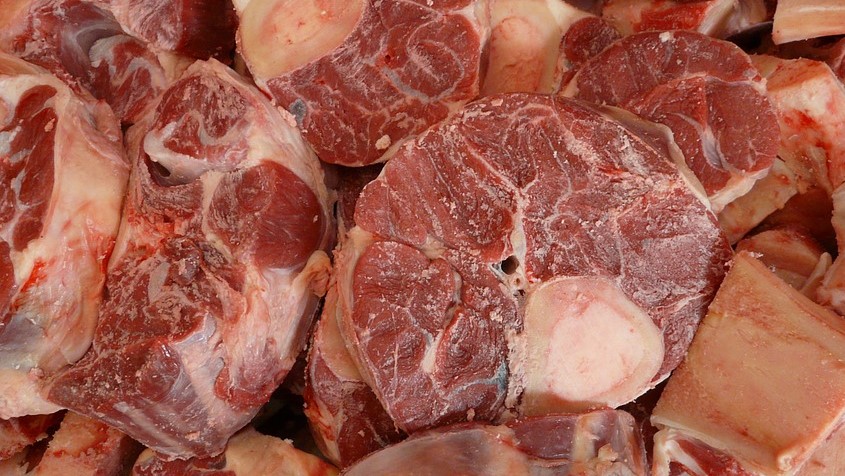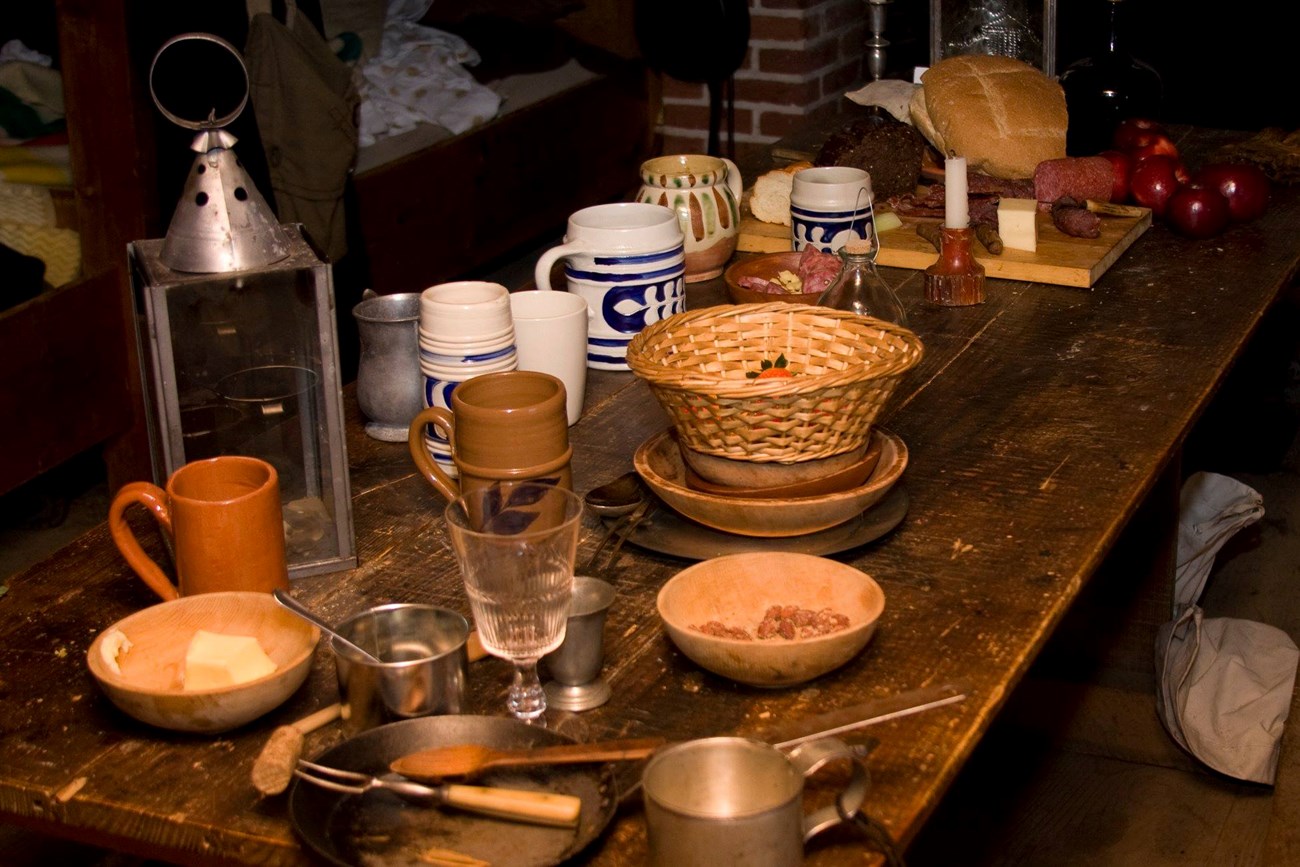Before his arrival to the fort in the spring of 1777, Gansevoort sent a letter to his second in command, Lieutenant Col. Marinus Willett, ordering a garden to be planted near the fort:
Everyday, private soldiers would have received a portion of bread, flour, or vegetables for their one daily meal, along with a portion of meat. Meat was often shipped to the fort in barrels of brine and not considered fresh by today’s standards. What little livestock they had was kept for milk production. During the Siege of 1777 a number of these animals were killed for food; a fact Gansevoort later bemoaned to Gates stating that they should have had proper supplies before an attack occurred.“As soon as the Season will permit you will have the Garden put in Seed, that the Garrison may not be without vegetables in their Season.”
Even with fresh vegetables available, portions weren’t always distributed fairly. By the next spring, orders were issued to the men that specific food items were to be sold at set prices (Example: 16 Shilling for 17 lbs. of onion and $2 per head of cabbage). This was done so that those civilians and even other soldiers with more access to the garden and livestock could not cheat others out of their fair share.

One pound of beef or pork equals about four standard fast-food hamburgers before they are
cooked. Throw in the buns, a leaf or two of lettuce, and an onion slice for each and you have a modern equivalent to a Third New York soldier’s daily food ration.
Rations & Subsistence for Common NY Ranks
| Privates & Non-Commissioneds |
Given Per Day | Per 100 Rations |
| • Sergeant Major • Drum /Fife Major • Sergeant • Corporal • Drummer/Fifer • Private Soldier |
• 1 lb. bread or flour** • 1 lb. beef or 3/4 lb. pork • 1 gill 1/4 pint, or gill, of gum |
• 1 quart of salt • 2 lb. of soap • 1 lb. of candles |


